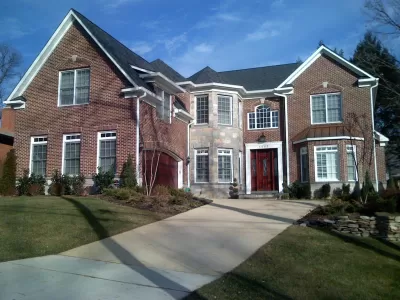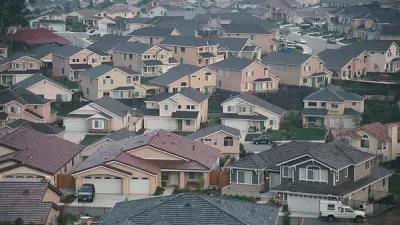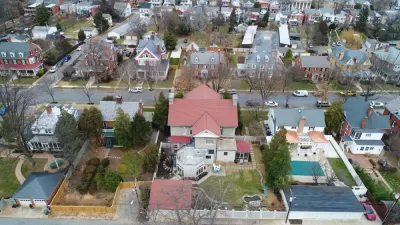According to this article, the market forces behind large home construction are alive and well. In a process of suburban gentrification, developers purchase older, smaller homes and build "McMansions" in their place.

Downtown may be hip, but the large suburban home is still worth its weight. Looking to build and sell new upscale homes, developers have labeled older suburban homes "'functionally obsolete' - the kitchens are enclosed, the ceilings are low, closets and windows are too small."
The continuing appeal of suburbia plays a role: "Builders, lured to locations where land is more valuable than the aging housing stock, are transforming communities outside of major employment hubs to take advantage of demand for real estate where schools are decent and commutes are short."
This kind of development has prompted much debate. "Supporters say builders are removing deteriorating structures and putting up more energy-efficient houses that add to the tax base. But some residents complain that construction of big and boxy 'McMansions' undermine the character of neighborhoods, causing the destruction of trees and the constant buzz of machinery in their ears."
FULL STORY: The Mansions That Are Swallowing Suburban Homes

Planetizen Federal Action Tracker
A weekly monitor of how Trump’s orders and actions are impacting planners and planning in America.

Maui's Vacation Rental Debate Turns Ugly
Verbal attacks, misinformation campaigns and fistfights plague a high-stakes debate to convert thousands of vacation rentals into long-term housing.

Restaurant Patios Were a Pandemic Win — Why Were They so Hard to Keep?
Social distancing requirements and changes in travel patterns prompted cities to pilot new uses for street and sidewalk space. Then it got complicated.

In California Battle of Housing vs. Environment, Housing Just Won
A new state law significantly limits the power of CEQA, an environmental review law that served as a powerful tool for blocking new development.

Boulder Eliminates Parking Minimums Citywide
Officials estimate the cost of building a single underground parking space at up to $100,000.

Orange County, Florida Adopts Largest US “Sprawl Repair” Code
The ‘Orange Code’ seeks to rectify decades of sprawl-inducing, car-oriented development.
Urban Design for Planners 1: Software Tools
This six-course series explores essential urban design concepts using open source software and equips planners with the tools they need to participate fully in the urban design process.
Planning for Universal Design
Learn the tools for implementing Universal Design in planning regulations.
Heyer Gruel & Associates PA
JM Goldson LLC
Custer County Colorado
City of Camden Redevelopment Agency
City of Astoria
Transportation Research & Education Center (TREC) at Portland State University
Jefferson Parish Government
Camden Redevelopment Agency
City of Claremont





























